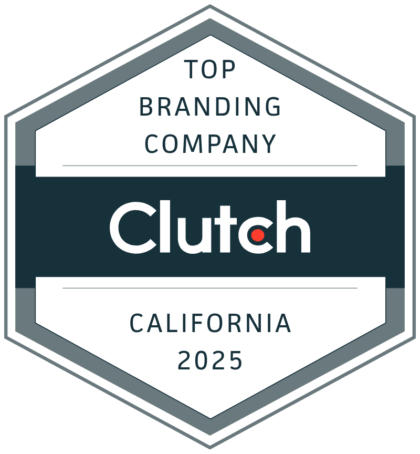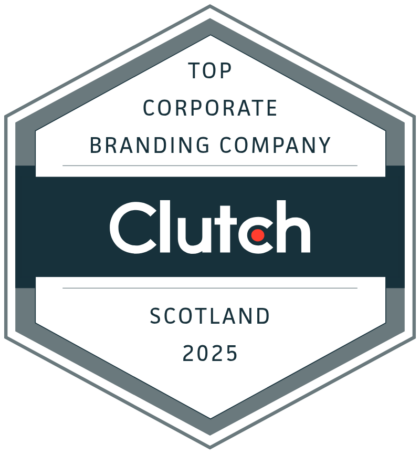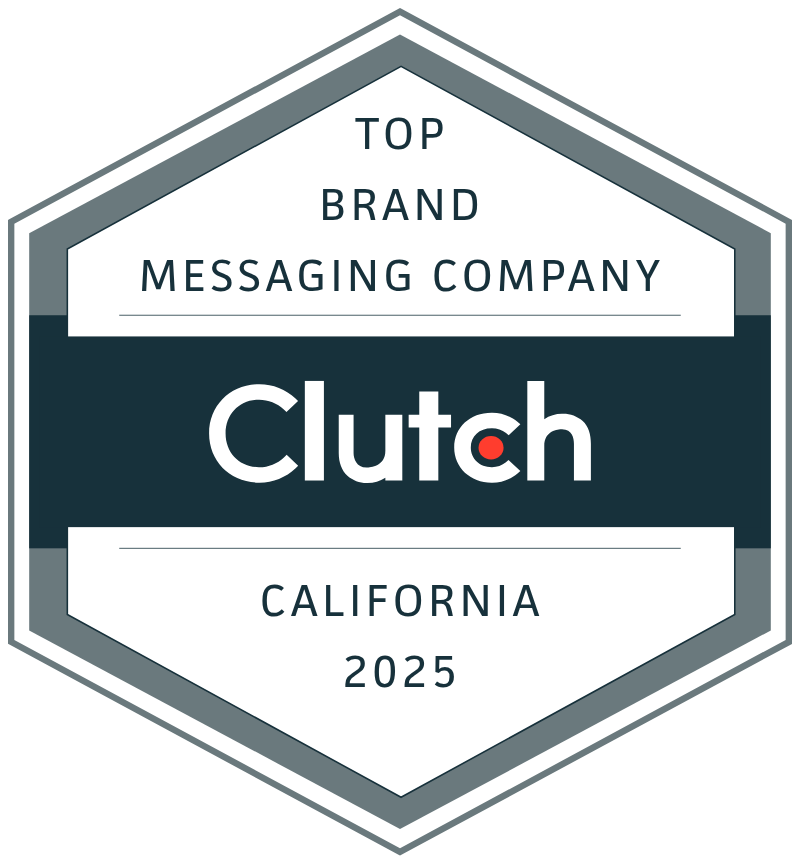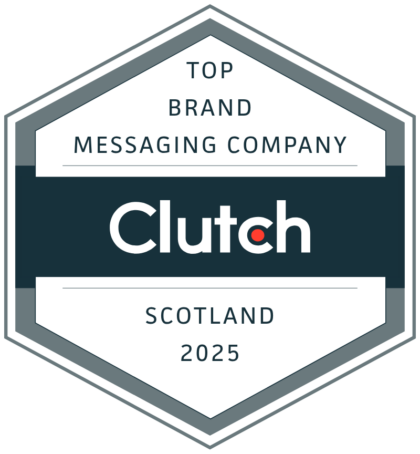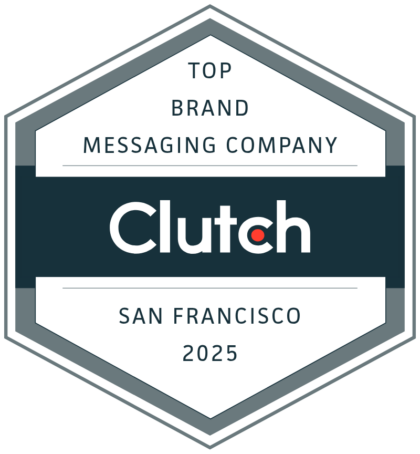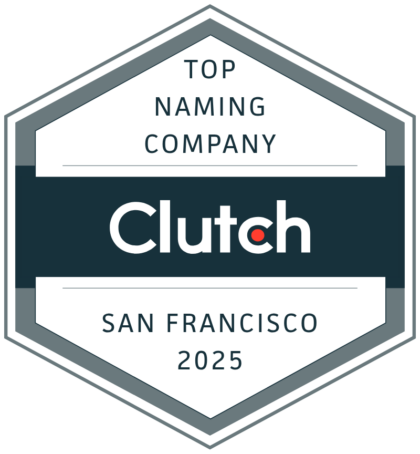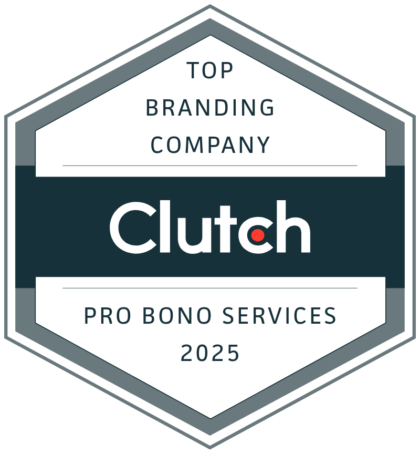How Ideas Become Ads
Cate Newsom sits down with Amo Bassan to talk about the journey the team takes in moving from creative concept to finished art.

Cate Newsom and Amo Bassan | FEBRUARY 17, 2016
CATE: Amo, in your last post you talked about concepting for creative, and today you’re going to tell us a bit about how the next step in that process works which is the production step. Could you walk us through the process to get us started? How does it work?
AMO: Sure. The first stage is getting a brief. We’ve done our concept, the client likes it, it’s approved, and now we’re going to put it into practice. So we get a brief, and we all sit round, and that tells us what we need to produce, it tells us what kind of thing we’re going to be doing. So it could be a brochure, it could be a digital piece, it could be, a T-shirt – whatever, anything! The brief tells us where we should be going, and then we start designing, we start putting some ideas together and trying different options. We try a lot of different things internally. There’s an idea that production’s much easier to do, that it’s a really simple, easy process once you have the style system that you’ve put in place.
It isn’t. Because when you’re producing the concepts, you never know where they’re going to go. Luckily, we tend to build in some flexibility in our concepts, knowing full well that the system can change, the grid system, the application of it. So we tend to try a lot of different things, then mock it up if we can, and then wrap it up into a presentation.
CATE: And by flexibility you mean that there are multiple media that this may have to be applied to?
AMO: Yes – If you have a design for example, that’s square, the concept, and Murphy’s law someone wants a brochure that’s rectangular, and then you have the square concept that’s only ever designed to work as a square, what do you do? Where do you put it? How does it work? Or changes from the client side. They may want to put it somewhere completely different. You’ve done this amazing concept and they want to put it on a boat or something, and it was never meant to go there – because they’ve sponsored something, and so off you go! It’s on us to be prepared with the concept. And also to prepare the client – that the concept is flexible enough that it can change. So what you see now is a feeling, it is a kind of system. And then the real proof of it is going to be in the application.
CATE: So in the application part, which is then the production phase that we’re talking about, is it creative? How does creativity come into the production process?
AMO: Yeah it’s absolutely creative. As I was just saying, there’s this idea that in production it’s downhill from here, that it’s plain sailing. It’s not. Again, if you take a brochure as an example, the client may have an idea that it’s going to be a certain form factor. And it’s usually the simplest idea, so they’ll say A4 or 8.5 x 11, it’s bound, maybe stapled or perfect-bound, whatever, and then off you go. It’s just that number of pages and then done, glossy cover, different insert. The thing is, we can always turn around and say no. And we usually do.
So an example: recently a client wanted something very conventional like that, and we produced a brochure that folded into a pyramid, so it was physical, it was 3-D, and the reason for doing that was again down to this brand system we created. The brand line was all about being engineers. And so we thought, there’s an opportunity here. Just a normal brochure means we’re just using the word “engineer.” We’re not actually applying it in any meaningful way. So we created this more tactile, more interesting brochure. And they loved it, it’s just so far from what they’d done the year previously with a different agency that it needed to – it needed a year or so to get comfortable. In a year it may be perfect for them.
So instead of just going back to what they thought they would get, we did something in between, which is a kind of square brochure with different die cuts, which – although it was tactile it wasn’t quite so crazy for them. And they got it. So the key is never to go back, it’s to try to find that middle ground. And that’s what takes time. And I think it’s good to present stuff like that to the client because they see that you’re not going to try to take the easy way out. And of course we could. But that doesn’t feel right.
CATE: That sounds like a very collaborative process then?
AMO: Yes. It’s collaborative in that we explain everything to clients, and we never present just one idea, we always present a few ideas, trying to gauge their appetite for something interesting. It’s about trying to set the tone. It’s always good to go in quite creative, because you want the rest of the pieces to be the same. You want it to set a really decent tone for the creative.
When the client “gets” the first piece you do, that’s when you say to yourself you’ve got away with it. Not got away with it in a kind of cheating sense, but get away with it in a kind of “we’d never thought they’d go for this, and it is brilliant and we like it, and they like it. The people who are going to use it like it” sense. Then you know everything else is going to be OK. You know you can apply the same sort of style.
CATE: And how about the feedback process working with the client? What do you do in order to get the kind of feedback you need – to get useful feedback?
AMO: The thing is to respect the client and to present it properly to them. Don’t just send them a brochure and lean back and say, “Here, what do you think?”
Talk them through it. Respect their time. Create a presentation, in the same way you will have created a presentation to show your concepts, do that for the finished piece as well. Take them on a journey, take them through a process where they understand what you’ve done, they understand why this concept they’ve signed off on is now going to work on a T-shirt or a brochure or whatever. Present it so they understand it and you’ll get the right kind of feedback.
CATE: I have noticed you’ve used your sketches to show clients how you started thinking about a project. Is that part of that process then?
AMO: Absolutely. I always show the sketches as well. I think they appreciate seeing that you tried different things, you exhausted all the different opportunities, and you landed on one that made sense or that one that had the right level of design, that respected the budget as well, and the user.
There’s only so much you can do on a T-shirt, but certainly when it comes to brochures you can go off the charts, you really can. You just have to be careful, you know, don’t set strange expectations. Do the math beforehand, don’t come up with something really crazy and not keep the budget in mind, and then they fall in love with it, and then you say, actually we need some more money, because that’s not a good position to be in.
CATE: How about from a production perspective again, what a dream project for you would be?
AMO: A dream project would be something that includes everything, has a piece of every kind of media in it, something that is visual – light, sound, physical stuff—and everything created by yourself or your team. No stock images; you’ve been able to do the photography for it, you’ve been able to create the lighting, the graphics, the sounds, the physical things. A digital piece in there too. Maybe it’s an installation. Perhaps a little self indulgent, but that would be great. There’s an opportunity for most clients—there is.
CATE: So full experiential branding, it sounds like.
AMO: Yes. Because most clients produce physical things in a place. They have a sound and a system. A lot of our clients, they have facilities, you go and see them, there’s a sound that goes on in there, there’s a sound, there’s a smell, there’s kind of a visual to it, a color. I think you could wrap it all up. It would be brilliant.
CATE: Well you mentioned smell, and I remember you were telling me about a scent project you did in your personal life, actually, is that something that taught you about the production process then, being on the other side of the table?
AMO: Yes—I’ve never had to write the brief before! It was a conversation I had with a friend called Euan McCall here in Edinburgh, he works at Penhaligon’s, he’s a parfumier, and I jokingly said to him, “Could you create a fragrance for me?’ And he said, “Yeah! Who’s it for?” And on the spot, I hadn’t considered whom it was for, so I just said, “my wife.” And that started this crazy journey. Together we made up a brief to describe my wife in physical terms, her personality, likes, dislikes, and just any other things. It’s just an A4 sheet with 12 lines on it. Twelve sentences, and from that he made a fragrance. And it was incredible. It had to sum her up, it had to sum a person up and combine all those things. It was way beyond something as simple as saying, “she likes strawberries,” and then create something that smells like strawberries. It’s, “how do you bring in different elements of that?” And it’s so beyond my thinking that he managed to do that. She loved it. I would definitely do it again.
I think there’s an opportunity there to do it with brands if you think about different experiences people have, like and airline or something. What if you did a fragrant in the lounge area and it was the same as in the plane – that would be amazing. It’s that consistency, that journey. There’s a lot of ideas there.
CATE: Well, thinking about that process that you went through then, you were on the other side of the table, you were briefing your friend, and came up with this, and then coming back to the process you go through at Evviva, are there things that your clients and your colleagues don’t know about the production process that you wish they did?
AMO: I think the main thing is that it’s not a linear process. It’s not the easy part of the journey. “Production” sounds just like that; it sounds like you’re BMW, you’ve created this amazing car. It’s just a case of making 3 million more, and that’s what the factories and the robots do. It’s beyond that. It’s much harder. I find it to be the hardest part of the process. It’s just a different part, a different stage of the journey. Because you really are saying, “look, this concept was right, you chose wisely.” We’re saying “it’s great, we can do something with it, and here it is.” It’s never, “just put your bits together.” It’s not like Lego. It’s because of the different places you can apply it. That’s really the thing I think they don’t get to see, or the process.
I think it slowly starts to dawn on our clients that it is like that, because we always present our work back to them, at every stage. And it’s to say, “Look, what we can do is limitless, really. This is what we did for you.”
CATE: So if you were to think of a brand that you’ve been impressed by, or should I say a dream brand for you to work with, what product or company would that be?
AMO: I don’t tend to gravitate towards brands as such. I think it’s more the opportunity. If you say a client has got a really interesting opportunity, but they’re not that well known, that to me is a lot more valuable than a brand that has everything, because your room to maneuver is ever-diminishing. It’s just fixed and they won’t want to change much.
I suppose a brand I’m impressed by is Microsoft. I wasn’t expecting it to be that case. A couple of years ago, I went to get a new phone and I saw this windows phone – I remember it was a Nokia phone with a Windows operating system, and I thought, ‘This is brilliant! This is great!” I had an iPhone at that point, but I thought, yeah, I’m going to get that. And it was amazing; it was such an interesting visual system. A really visual system! And I just didn’t expect it. But what was more interesting is the journey it takes you one. So you go home and you have to then get your music onto it, so you have to download some software, you have to go to the store, go to their website, and it introduces you to new elements, to new aspects of the same design system. I just liked the fact that I didn’t expect it.
I didn’t expect them to have applied them that well, and I’ve got a lot of respect for them. It’s just I think a lot of it’s been down to them having not been in the spotlight with the obvious competitor, which is Apple, who have to maintain the system. I think Microsoft have the luxury of not having people poking holes in them. I mean when it came to this system, they had options to create it and just stick with it, and they’ve done it really well I think. I’m certainly intrigued by it, and it’ll be interesting to see where it goes. I’d be interested in buying a laptop just to see how it works, just to use it. It’s an interesting way of presenting content. And I think it’s influenced a lot of things without people thinking about it. I think their design team did a good job. There’s a level of thought that’s gone into it that they should be applauded for.


